Customer support agents may have to handle an overwhelming number of tickets every day, which can lead to productivity issues, employee dissatisfaction, and burnout.
Fortunately, you can help the situation by introducing tools like an automatic call distribution system.
An automatic call distribution system (ACD) connects incoming calls to suitable agents in the least time possible. This telephone system may also offer features like call queuing and voicemail for boosting agent efficiency.
In this article, we’ll explore what automatic call distribution is, discuss its six key features, and the eight types of automatic call distribution methods. We’ll also cover its three key benefits and highlight five popular automatic call distribution software.
Table of contents
- What is automatic call distribution?
- 6 key features of automatic call distribution system
- 8 different types of automatic call distribution
- 3 major benefits of an automatic call distribution
- 5 best automatic call distributor software
- Wrapping up
Let’s get started.
What is automatic call distribution?
Automatic call distribution is when a telecommunications system routes inbound calls to a specific agent in call centers and contact centers. The technology that carries this out is known as an automatic call distributor (ACD).
An ACD can also connect the right agent to a call based on various factors like agent skills and customer profile. This way, ACD systems can contribute to customer satisfaction and a better customer experience.
Advanced ACDs have omnichannel routing services that route customer inquiries from email, messaging, web chat, social media, and other digital channels to the appropriate agents.
Most importantly, ACD can integrate with other tools like IVR (Interactive Voice Response) and CTI (Computer Telephony Integration) to simplify customer support operations with a business phone system.
Here’s how ACD fits into the call distribution process:
- Caller information and identification: Once the call comes in, the IVR system identifies the purpose for the call, language, and location from the caller ID. The IVR asks the caller to press certain keys on their phone corresponding to their reason for calling.
- Call queuing: ACD software organizes incoming calls and requests based on factors like waiting time, query, etc.
- Call routing: ACD software then sorts the data and routes the call to the right agent.
For a clearer understanding of ACD, let’s look into some of its features.
6 key features of automatic call distribution system
The features an automatic call distribution system offers will differ depending on which tool you choose.
Some ACDs with basic features are suitable only for helpdesk functions. But you can also find ACDs designed to handle complicated omnichannel communications like in a contact center.
Here are the most common features of an automatic call distributor:
1. Routes incoming calls
An ACD system works based on your routing strategy and the corresponding algorithm. Your routing strategy should take into consideration factors like:
- Agent skill sets.
- Caller ID.
- Automatic number identification.
- Dialed number identification.
- Artificial intelligence (AI)-powered behavioral profiles.
The ACD routing strategy you choose will determine how calls are assigned to agents.
For example, the routing algorithm of a call center may connect calls based on the agent skill. As a result, the ACD would route calls from France to a French-speaking call center agent.
Similarly, let’s say the routing strategy of a contact center is to connect technical tickets from chatbots to suitably qualified and experienced agents. Your ACD will route the appropriate ticket to a contact center agent with more specialized knowledge and expertise.
2. Premium integration
To provide better customer satisfaction, ACD integrates with other tools like:
- CTI (Computer Telephony Integration)
- IVR (Interactive Voice Response)
- CRM (Customer Relationship Management)
These integrations increase agent productivity by automating tasks, helping agents access customer data, and collecting information related to issues.
For example, by integrating your CRM with your ACD solution, agents can receive a screen pop-up that includes all the information of the caller, like past purchases, their feedback, transaction status, etc. From this, the agent can understand the customer’s profile.
3. Caller identification
Your agents may unknowingly attend to spam calls, causing genuine customers to wait longer in the queue and become frustrated. These spam calls can also hinder the agent’s workflow and negatively impact their productivity.
ACD can drop blocklisted numbers from the queue and save agents’ time. Additionally, the ACD system can also block phone numbers that you denylist.
Moreover, you can identify priority calls from a VIP caller and place them at the beginning of the queue with an ACD.
4. Call queuing
Mose call distribution systems offer an ACD queue functionality that reduces wait times and increases customer satisfaction. It puts callers in a queue to connect with the appropriate agent, helps manage high call volumes, and connects calls to customers who called first.
Additionally, ACD software lets you make various call queues for different departments, teams, etc., to streamline management.
You can also view the length of queues from the ACD software and reassign agents from different departments to improve workflow management.
Moreover, ACD has a call back functionality that allows agents to return unattended calls. Customers can opt for a call back option and don’t have to wait in long queues. This improves customer experience.
5. Voicemail generation
ACD can route incoming calls to voicemail when all agents are busy. Using these features, the customer can convey their issue and get it resolved without waiting in queues.
Additionally, you can use voicemail notifications, voicemail-to-text, and voicemail-to-email to ensure these messages don’t get lost.
Now, let’s look at the different types of automatic call distribution systems available to understand better how the ACD routes inbound calls.
8 different types of automatic call distribution
As different types of automatic call distribution suit different business requirements, you’ll have to choose the one that works best for you.
To help you choose the right one, let’s look at a few of them:
1. Rotary call distribution
In this system, all agents have an equal workload and take turns in answering customers’ calls. This system is beneficial in a company where all agents have the same skill set and job description.
The first call would be answered by the first agent, the second call by the second, the third call by the third agent, and so on.
2. Fixed order call distribution
Agents are arranged in a fixed order based on their capabilities and calls.
All ACD calls are initially distributed only to the first agent, who is the most skilled in the team. A call is routed to the second agent only if the first agent is busy.
This method is used when the company has agents of varying levels of expertise.
3. Simultaneous call distribution
In this routing strategy, the call rings for all agents, and the available agent who picks up the call first handles it. Simultaneous call distribution is followed by companies that aim for low customer wait times.
4. Talk-time call distribution
Like rotary call distribution, talk-time call distribution also aims to divide workload equally between agents.
The ACD routes the calls to agents who have less talk time — the amount of time an agent talks to customers, excluding the wrap time. This way, the agents are more likely to have similar talk times at the end of the day.
For example, let’s say one agent attended 20 calls in 40 minutes of talk time, while another agent took 35 minutes of talk time for the same number of inbound calls. The ACD will assign the next call to the agent who has lesser talk time in this system.
5. Skills based routing
Skills based routing (also known as weighted call distribution) connects calls to agents depending on their expertise.
Each agent has a particular score after considering factors like:
- Language proficiency.
- Efficiency.
- Expertise.
- Comprehension.
- Response time.
The ACD routes the calls to specific agents based on the agents’ scores.
For example, a VIP customer with a complex issue can be routed to an experienced customer center agent with better problem-solving skills.
Similarly, customer calls related to simple issues can be connected to less experienced agents.
6. Time-based call distribution
Time-based call distribution is a system in which calls are allotted to agents depending on their availability. Agents who’re free will receive the incoming call.
This system is apt for a remote call center with agents from across the globe. The ACD can route calls to agents according to their time zones. This way, you can serve customers worldwide and give your agents the off-time they deserve.
7. Idle time distribution
In this system, the ACD distributes incoming phone calls first to the agent with the highest idle time. The system aims to prevent employee burnout by evenly dividing work among the workforce.
8. Smart routing
Smart routing (or data-based call distribution) is a system in which callers are studied based on their history, demographics, etc., and routed to an agent who might assist them best.
Unlike other systems we covered above, smart routing prioritizes making a profit by accessing the sales potential of a caller.
For example, you can connect a premium customer’s call to the best sales agent. This way, you are more likely to get a conversion.
3 major benefits of an automatic call distribution
Let’s look at a few benefits of the automatic call distribution process:
1. Improved customer experience
ACDs improve customer experience by routing phone calls to a suitable agent quickly. This also ensures that queues aren’t too long and wait times are less using pre-set call distribution methods.
2. Workforce management
ACD routes the calls to agents who are available when they detect an incoming call.
It lets agents take breaks by assigning incoming calls to agents who’re working.
This increases job satisfaction and prevents employee burnout.
Moreover, ACD software helps manage the workforce efficiently even if you have a remote team. It allows agents to work together as a team even when they’re in different time zones.
3. Performance management
Most ACDs have a call monitoring feature that lets you view agent performance while the caller is speaking in real-time. They give you an idea about the weakness and strengths of agents.
Additionally, ACDs offer a call recording feature. It lets you observe business conversations and guide agents to provide better customer service. You can then use the obtained information to identify agents who need more training.
Now that you know why ACD is important, let’s look at a few leading ACD software in the market.
5 best automatic call distributor software
Here are a few popular tools that offer ACD features:
1. Talkdesk
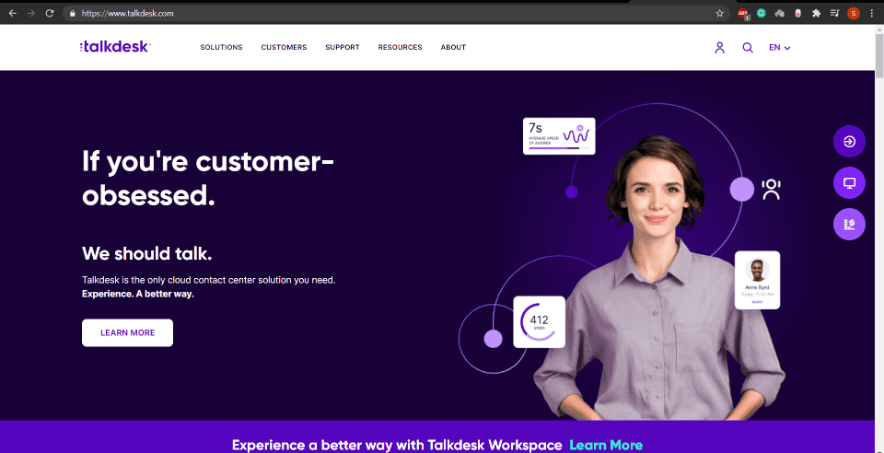
Talkdesk is leading in the CCAS (contact center as a service) industry by providing a great customer experience through all communication channels. The company uses innovative ideas to challenge the status quo and enhance customer experience.
Key services
- Uses customer information to customize routing decisions.
- Offers call monitoring, call barging, and call conferencing features.
- Utilizes smart routing to increase first call resolution.
Pricing
Contact Talkdesk for a customized quote.
Customer ratings
- Capterra: 4.5/5 (600+ reviews)
- G2: 4.4/5 (1400+ reviews)
2. Nice CXone
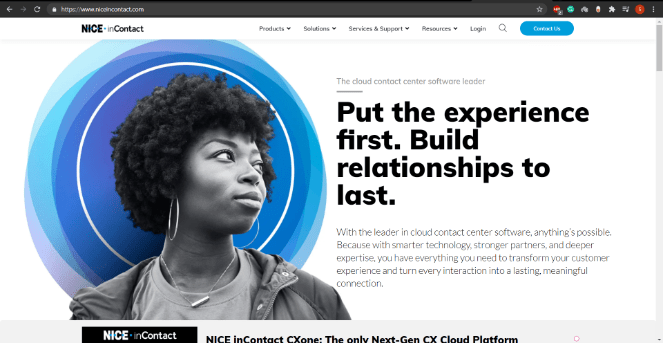
Nice CXone is an ACD software with over 16 years of experience working with more than 1000 contact centers. This software is designed for organizations of all sizes, from enterprises to small businesses.
Key services
- Uses AI (Artificial Intelligence) to match customers to agents.
- Seamlessly integrates IVR and AI chatbots to streamline customer interactions.
- Deploy changes in digital, voice, and route flowing in minutes.
Pricing
Nice CXone charges $20/user per month.
Customer ratings
- Capterra: 4.2/5 (500+ reviews)
- G2: 4.3/5 (1200+ reviews)
3. Dialpad
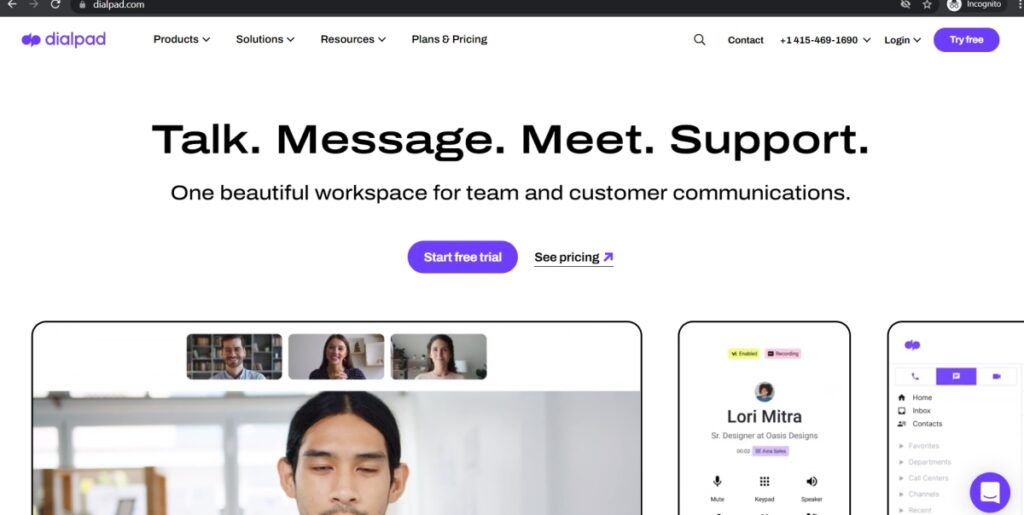
Dialpad is a business phone system that promises a 100% uptime and integrates with premium software like Google Workforce. Its automatic dialer distribution features help a contact center increase customer satisfaction by developing a better inbound call managing strategy.
Key services
- Generates new scripts in real-time to meet customer needs.
- Has built-in analytics and dashboards to view information readily.
- Informs callers of their position in the queue and lets them make a call back request.
Pricing
Contact Dialpad for a quote.
Customer ratings
- Capterra: N/A
- G2: 4.4/5 (100+ reviews)
4. Five9
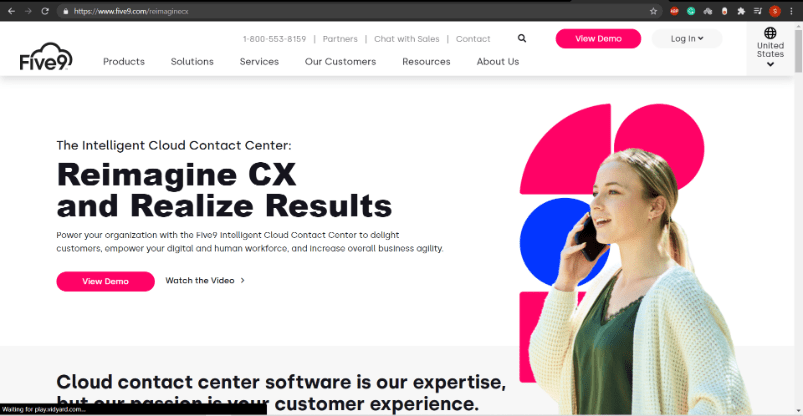
Five9 is a contact center software that provides an ACD solution equipped to function efficiently in a call center as well. With over 20 years of experience in the field, Five9 has served more than 2000 customers worldwide.
Key services
- Prioritizes a communication channel depending on the customer’s history.
- Let’s create any routing strategy by simply dragging and dropping icons.
- Intuitive design and easy-to-use features.
Pricing
Five9 offers a flexible plan and pricing.
Customer ratings
- Capterra: 4.2/5 (300+ reviews)
- G2: 3.9/5 (200+ reviews)
5. CallHippo
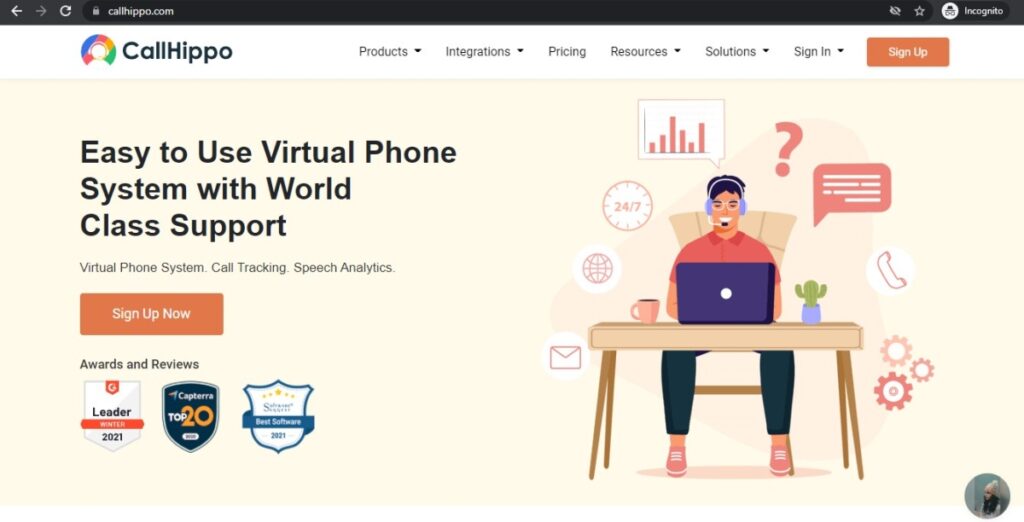
CallHippo is a cloud-based business solution that offers an intelligent automatic call distribution strategy. It distributes calls smartly based on a well-devised call routing strategy.
Key features
- Offers a powerful outbound dialer that makes calls and rings for 30 seconds automatically.
- Lets agents move between multiple telephony providers to avoid call connectivity issues.
- Offers an intuitive time-saving feature that lets you know when to call your international customers.
Pricing
CallHippo’s pricing plans start at $16/user per month.
Customer ratings
- Capterra: 4.2/5 (200+ reviews)
- G2: 4.2/5 (100+ reviews)
Wrapping up
Automatic call distribution offers organizations in the customer service sectors several benefits by simplifying agents’ work, decreasing wait times, and increasing customer satisfaction.
There are tons of ACD software on the market, each with its own advantages. But you’ll need to choose the one that best suits your needs.
You can use the information we’ve provided here to help you make your choice and take your call center’s operational efficiency to new heights.

Liam Martin is a serial entrepreneur, co-founder of Time Doctor, Staff.com, and the Running Remote Conference, and author of the Wall Street Journal bestseller, “Running Remote.” He advocates for remote work and helps businesses optimize their remote teams.


